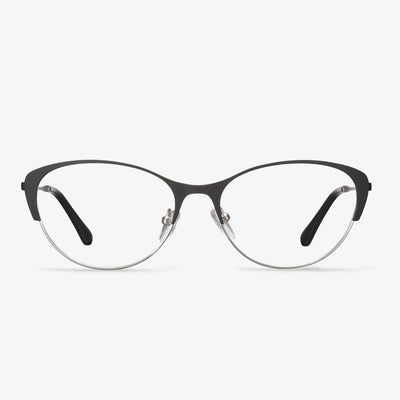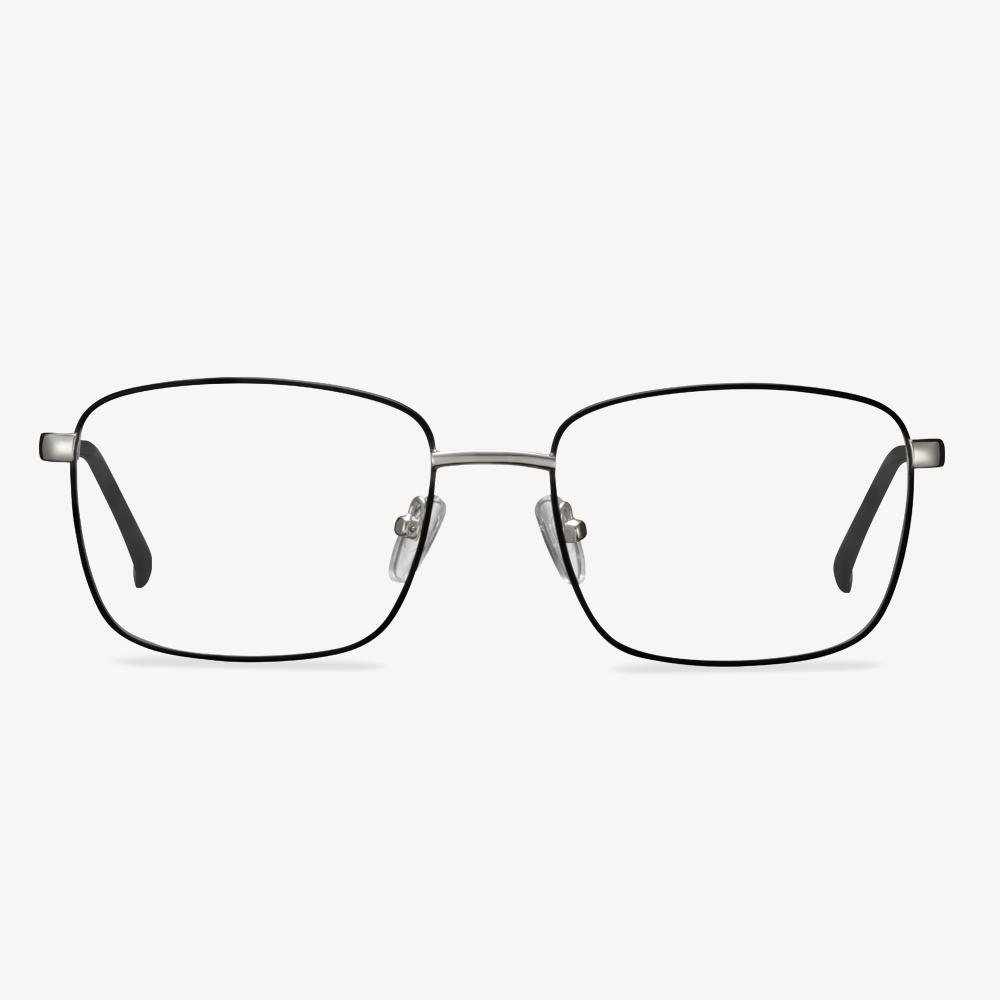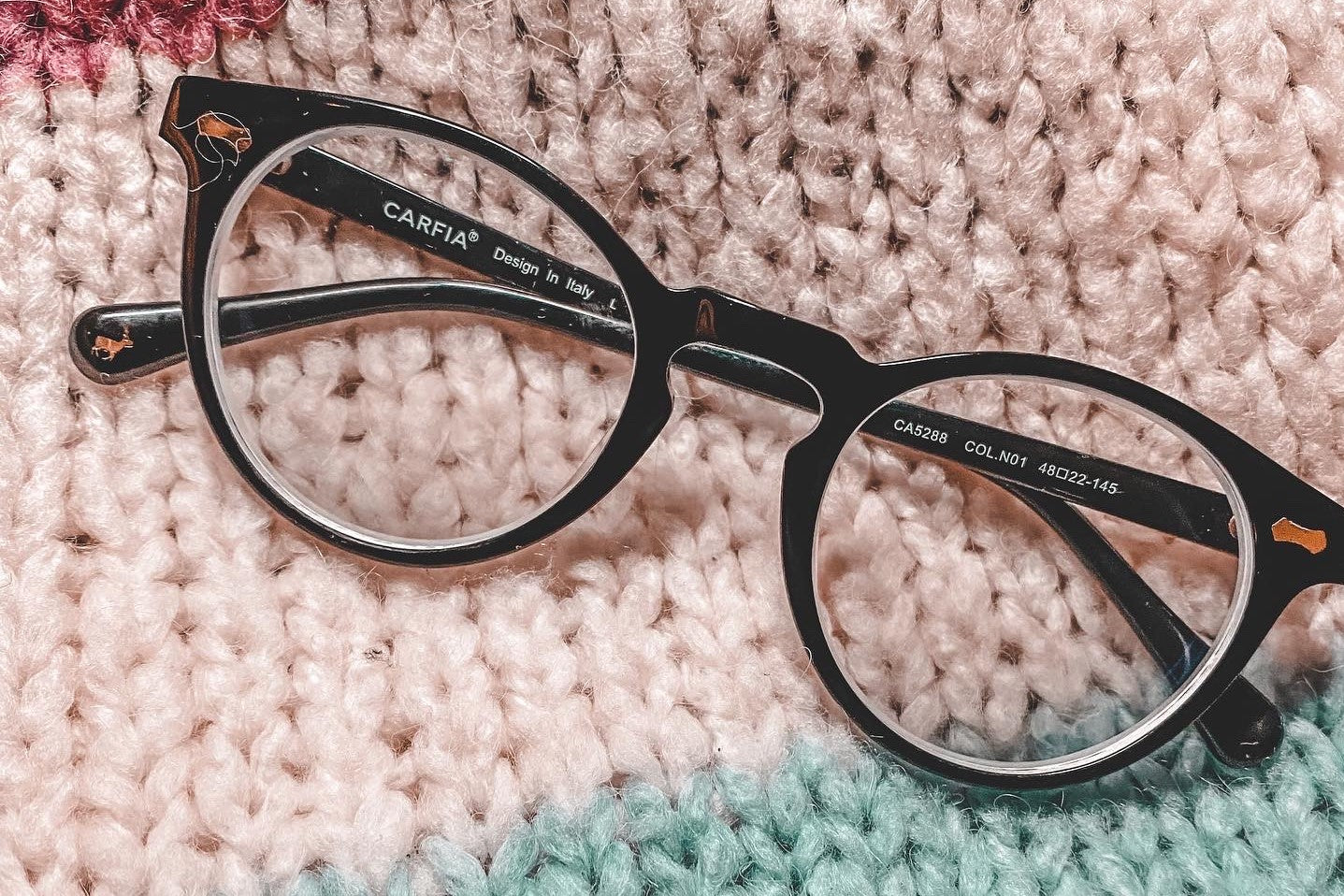Adjustment of the angle of the nose pad
For the angle of the nose pad, you can apply torque in the horizontal or vertical direction according to the deformation needs. It can be held in the proper part of the nose pad with needle-nose pliers, and the torque can be applied at a certain angle in the vertical plane or horizontal plane to achieve the purpose in accordance with the deformation needs. In the time of repeated actions, in order to prevent the welding place of the nose pad and the glasses ring from breaking due to repeated stress deformation, you can use your fingers to apply external force at the welding place to change the deformation position and play the purpose of protection.
Foster Grant
Foster Grant's Modera series wouldn't be complete without our Larsa reading glasses. A creamy caramel rectangular frame wrapped in delicate animal motifs in gold and brown looks chic. The spring-hinged temple is comfortable and suitable for all-day wear. Each comes with a protective case that you can use on your travels.
Bertoni polarized glasses
Bertoni polarized night vision driving glasses are made of strong, flexible, durable, and ultralight polycarbonate. Yellow polarization increases contrast, improves visual acuity, and filters out blue light. They are great for drivers, cyclists, and winter sports enthusiasts. The driving glasses with polarized yellow lenses block glare from headlights, reduce night driving glare, improve night vision, and improve color clarity and visual clarity. They are ideal for driving in low-light conditions. Most sports sunglasses glasses frames and goggles are made of polycarbonate because of their strong, thermoplastic, lightweight, and impact resistance features.
Types of Progressive Lenses
At the same time, there are different types of progressive lenses and they are standard PALs, short corridor PALs, computer PALs, and Reading PALs.
Standard PALs must fit your vision needs. They can be added to frames of your choice, but you need to ensure that the frames are the right width and height proportions to grant enough space for the gradient changes in the lens.
Short corridor PALs are made to fit into smaller frames so as to suit a wider range of eyewear styles.
Computer PALs are designed for computer users and other occupations that require strong intermediate and distance vision.
Reading PALs are designed for those who enjoy reading and they can opt for a pair of lenses with a larger close vision zone.
Are rimless glasses in style 2022?
Now the glasses design concept changes with each passing day. The glasses are more and more in line with the aesthetic requirements of modern people, adding style and elegant demeanor to your clothing collocation. Rimless frames are not obvious either in appearance or weight, relieving some of the distress caused by myopia. Rimless glasses not only give you a wider view, but reduce overall weight, and have become a favorite of many fashion trendsetters. Are these rimless glasses your style?
Polycarbonate vs Plastic Lenses: Which One Is Better?
From the above information, you may have learned some features of polycarbonate glasses and plastic lenses. So, do you know which one is better?
Here are some a few differences between both lenses to determine which one is better.
- Polycarbonate lenses are more expensive than plastic glasses.
- Polycarbonate lenses are very resistant to tint compared with plastic lenses which accept tints.
- Polycarbonate glasses have inherent UV protection, while plastic lenses do not have.
- Polycarbonate glasses have higher impact resistance and offer greater protection than plastic lenses.
- Polycarbonate glasses are lighter than plastic glasses.
- Plastic glasses have a higher optical clarity than polycarbonate lenses.
So, from the above part, you may have learned which one is better and you may have a decision of how to choose.
Early glasses
The first inventor of wearable glasses is not known. However, it was the Romans who first discovered the use of glass to enhance their ability to see small words, creating small magnifying glasses with spheres. The first known wearable glasses in history appeared in Italy in the 13th century. They were used mainly by monks, and became popular little by little during the Renaissance, as the technology improved. As their popularity grew, the Italian glasses spread throughout Europe, mostly within reach of the wealthy. Because learning was a prized attribute during the Renaissance, glasses were a status symbol of wisdom and prosperity. With the temple extending above the ear, the glasses are no longer required by hand.











































